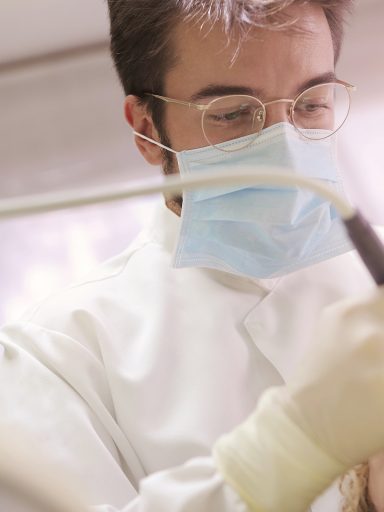Embracing the world with a confident smile can be transformative, and Invisalign has become a popular choice for those looking to straighten their teeth discreetly. Straightening one’s teeth no longer requires the traditional metal tracks; instead, it’s done through a series of nearly invisible aligners.
But like any medical or dental procedure, it comes with its nuances in how it impacts daily routines. Let’s explore how Invisalign could weave into the fabric of your everyday life, from the simple to the significant.
Eating and Drinking With Invisalign
One fundamental question we often ask when considering dental treatments is, “How will this affect my eating habits?” With Invisalign, you might adjust your routine slightly. The aligners are removable, which means you need to take them out while eating or drinking anything other than water. Here are some considerations:
-
Eating schedule: Since aligners should be worn 20-22 hours per day, you’ll need to plan your eating times efficiently. This could mean fewer snacks and more scheduled meals.
-
Food choices: While there are no off-limits foods, you might trend towards easier-to-consume options to minimize aligner removal time.
-
Beverage consumption: Sipping on coffee or other pigmented drinks with aligners in can stain them, so you’ll want to save those for meal times.
Maintaining Oral Hygiene
Oral hygiene becomes paramount while undergoing treatment with Invisalign. Since the aligners cover your teeth, any lingering food particles can be trapped, leading to an increased risk of dental issues. Here’s how you’ll need to adjust:
-
Brushing and flossing: After each meal or snack, before placing aligners back in, a thorough brush and floss are essential to maintain healthy teeth and avoid bad breath.
-
Cleaning aligners: In addition to your teeth, the aligners themselves need to be cleaned regularly to prevent bacterial buildup and odor.
Speech and Comfort
Adjusting to talking with a new dental device can be a hurdle at first. Although Invisalign aligners are sleek and custom-fitted, they can still cause a temporary lisp or make you feel self-conscious during speech. Comfort-wise, the aligners apply pressure to shift your teeth, which can cause some soreness, especially when switching to a new set. Despite these discomforts, they are usually minor and diminish as your mouth adapts.
Social and Professional Interactions
Your social life and professional engagements don’t have to hit pause with Invisalign treatment. Since the aligners are transparent, they’re not as noticeable as traditional braces, causing minimal impact on your appearance. Plus, for those critical moments or meetings, you have the liberty to remove them momentarily – don’t forget to pop them back in right after.
Playing Sports and Activities
Wearing Invisalign doesn’t mean you have to give up your favorite sports or activities. However, it’s important to protect your mouth and your investment. For contact sports, consider removing the aligners and using a mouthguard for protection. Remember to pop the aligners straight back in post-game to maintain your wearing schedule.
Invisalign for Different Ages
Correcting teeth alignment isn’t only for the young ones. Invisalign for adults and teenagers has gained traction due to its subtlety and effectiveness. Adults find the discreet nature compatible with professional life, while teenagers appreciate the freedom from the aesthetic of traditional braces. Adapting to Invisalign aligners can be smooth for both age groups with the proper guidance and mindset.
Travel Considerations
For those with wanderlust or work obligations that involve travel, Invisalign will require some forethought. Packing a travel-sized oral hygiene kit is crucial, as is bringing your next set of aligners if you’re due for a switch while away. Additionally, keep your dental professional’s advice at hand in case you encounter any challenges on the road.
Cost and Investment
While thinking about lifestyle changes, it’s also important to consider the financial commitment. Invisalign may have an initial higher cost compared to traditional braces, but you’re investing in a more flexible treatment that aligns with an active lifestyle. Additionally, the cost can be managed with payment plans and dental insurance coverage, softening the economic impact.
Tooth Extraction and Invisalign
Sometimes, straightening your teeth requires more than just aligners. In specific cases, a Bronx tooth removal might be necessary to create space for adjustment. This would typically happen before starting with Invisalign, not during the treatment process. Such extractions are routine and can make a substantial difference in the effectiveness of your straightening plan.
Dealing With Emergencies
What if a dental emergency arises while you’re on Invisalign treatment? Emergency dental care can still proceed as usual. If you’re facing a dental crisis, like a chipped tooth or acute pain, visiting an emergency dental office should be your first step. Once the immediate issue is addressed, your Invisalign treatment plan can be evaluated and adjusted if needed.
Conclusion
Switching to Invisalign can certainly weave new threads into the fabric of your daily routine, but it doesn’t have to upheave your lifestyle. While it introduces changes to eating habits, oral care, and possibly even your social confidence, these adjustments are minor compared to the long-term benefits of a rejuvenated smile. With careful planning and a willingness to adapt, we can welcome the subtleties that Invisalign brings into our lives, knowing that the outcome is more than worth the journey.





